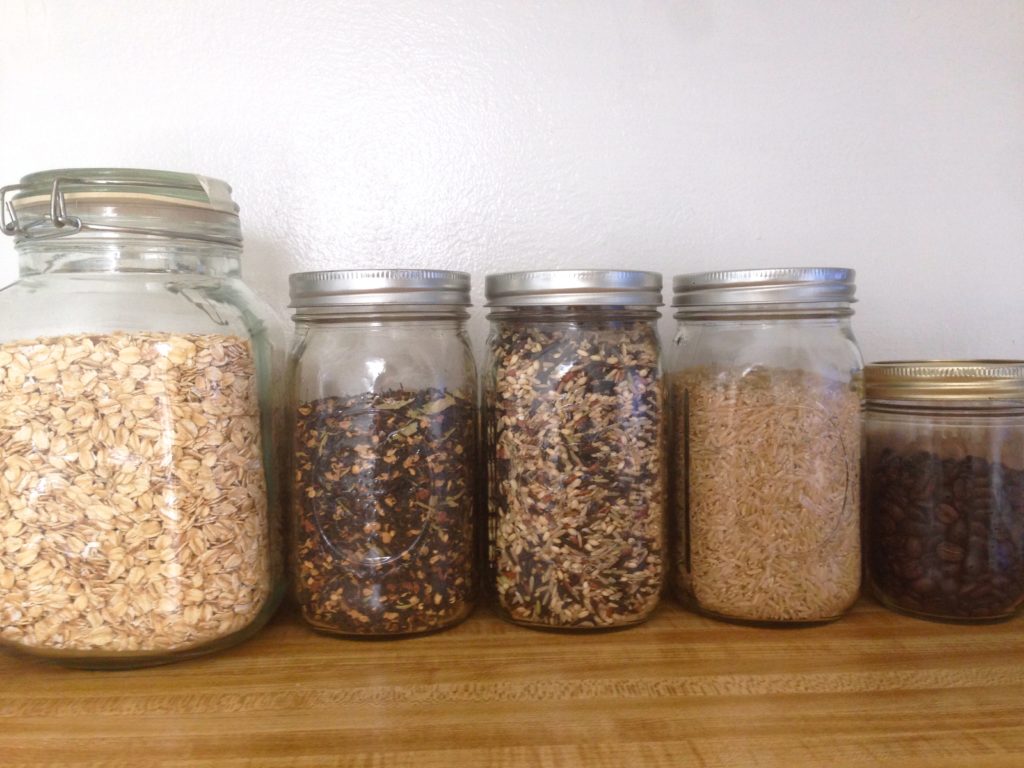Digging Through the Trash
We don’t produce anywhere near the 4.3 pounds of trash the average American creates every day, but we could definitely do better.
The indoor can fills up about every two weeks or so. It doesn’t smell at all since we compost all food scraps so we tend to let it fill up completely. But every time I toss something into it or take it to the curb I am flooded with sadness and frustration.
Our trash is full of plastic bags.
At least 75 percent of our total trash volume is non-recyclable plastic food packaging like chip bags, cracker containers, and the plastic film that goes around jars or over hummus containers.

What’s in our trash (by volume):
1. Chip/snack packaging
2. Tissues
3. Plastic films and safety seals
4. Floss
I’ve known for months that we could cut our trash down by 50-75 percent just by no longer buying packaged potato and rice chips. At 4-8 bags per week, we are stuffing ourselves and the trash with junk. But the habit is much harder to kick than I anticipated.
How we can reduce our trash:
1. Ditch the packaged snacks.
In my dream world we buy crackers, chips, and healthy snacks from bulk bins. Our local bulk bins have nuts, granola, and cooking staples, but very few snacks. There are only 1-2 pre-made snacks that I could conceivably eat out of the bins since I am allergic to nuts and gluten-intolerant.
But that doesn’t mean we have to starve or overfill the landfill. A recent trip to Rainbow Grocery in San Francisco gave me hope that we can find more snacks and staples in bulk bins – we just may have to travel a ways for them.
Actions:
1. Buy tortilla chips from a local restaurant in bulk to replace our packaged rice/potato chips. This makes it more likely that we will skip the snack isle at the grocery store, and it helps us increase our daily calorie intake (important with our training schedules).
2. Make more snacks at home. In the past I have massively struggled to not only come up with zero-waste snack ideas, but also to then set aside the time to make them. When I did manage to make something like granola bars or homemade hummus, we quickly got tired of them and I’d have to find a new recipe and start all over.
The good news is that I now know we get tired of snacks every 2-4 weeks. We can plan a snack for each week and rotate them to keep things interesting. It’s time to dig into some of my snack ideas and make snack preparation part of our weekly meal prep/cooking dinner habits.
3. Eat more whole foods for snacks. In the past couple of months I’ve been eating salads as snacks. It’s an easy way for me to sneak in more greens and also not feel like I’m loading up on junk throughout the day. More options are veggies with hummus, leftovers from dinner, and hard-boiled eggs.
4. Schedule monthly trips to better bulk bins.
2. Use Handkerchiefs
This switch has been on my list for months. Due to allergies, I use at least a couple of tissues each day. After a ton of research and decision paralysis, I finally chose a pack of reusable organic cotton baby wipes to use at handkerchiefs. Well, the internet was wrong. They make terrible hankies.
My failure was disappointing, and I lost motivation. But I need to go back to my list and find a set that will actually work the way I want them to.
3. Compost Tissues
My boyfriend is less than enthused on the handkerchief idea. Since I make the bulk of tissue waste anyways, this isn’t going to impact our trash greatly. To make composting tissues easier, we can add a small paper bag next to (or inside of) our trash can to collect tissues.
4. Floss
Eventually we may switch to completely compostable floss, but for now we should start with reducing how much we use in the first place. Most of the floss we pull off the roll each night doesn’t get used. We need to use shorter strands each time. I might get super nerdy and make a guide for the smallest amount of floss for comfortable flossing so we don’t have to think about it each time or accidentally take too much.













